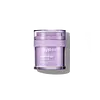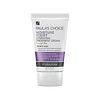Dr. Idriss Major Fade Active Seal Moisturizer Versus Paula's Choice Moisture Boost Hydrating Treatment Cream
What's inside
What's inside
 Key Ingredients
Key Ingredients

 Benefits
Benefits

 Concerns
Concerns

 Ingredients Side-by-side
Ingredients Side-by-side

Water
Skin ConditioningGlycerin
HumectantTetrahexyldecyl Ascorbate
AntioxidantDimethicone
EmollientPolyacrylamide
4-Butylresorcinol
AntioxidantHexapeptide-2
BleachingAllantoin
Skin ConditioningHydrolyzed Brassica Napus Seedcake Extract
Skin ConditioningTremella Fuciformis Sporocarp Extract
AntioxidantSqualane
EmollientDipotassium Glycyrrhizate
HumectantPentylene Glycol
Skin ConditioningButylene Glycol
HumectantDimethicone Crosspolymer
Emulsion StabilisingC13-14 Isoparaffin
EmollientCeramide NP
Skin ConditioningCeramide AP
Skin ConditioningCeramide EOP
Skin ConditioningLinoleic Acid
CleansingLinolenic Acid
CleansingPhytosphingosine
Skin ConditioningCholesterol
EmollientSodium Lauroyl Lactylate
EmulsifyingXanthan Gum
EmulsifyingCarbomer
Emulsion StabilisingCetearyl Olivate
Sorbitan Olivate
EmulsifyingLaureth-7
EmulsifyingCaprylyl Glycol
EmollientHexylene Glycol
EmulsifyingEthylhexylglycerin
Skin ConditioningPhenoxyethanol
PreservativeWater, Glycerin, Tetrahexyldecyl Ascorbate, Dimethicone, Polyacrylamide, 4-Butylresorcinol, Hexapeptide-2, Allantoin, Hydrolyzed Brassica Napus Seedcake Extract, Tremella Fuciformis Sporocarp Extract, Squalane, Dipotassium Glycyrrhizate, Pentylene Glycol, Butylene Glycol, Dimethicone Crosspolymer, C13-14 Isoparaffin, Ceramide NP, Ceramide AP, Ceramide EOP, Linoleic Acid, Linolenic Acid, Phytosphingosine, Cholesterol, Sodium Lauroyl Lactylate, Xanthan Gum, Carbomer, Cetearyl Olivate, Sorbitan Olivate, Laureth-7, Caprylyl Glycol, Hexylene Glycol, Ethylhexylglycerin, Phenoxyethanol
Water
Skin ConditioningEthylhexyl Stearate
EmollientSimmondsia Chinensis Seed Oil
EmollientButylene Glycol
HumectantGlycerin
HumectantPetrolatum
EmollientCetearyl Alcohol
EmollientDipentaerythrityl Hexacaprylate/Hexacaprate
EmulsifyingTridecyl Trimellitate
EmollientSodium Hyaluronate
HumectantCeramide NP
Skin ConditioningCholesterol
EmollientTocopherol
AntioxidantSqualane
EmollientMagnesium Ascorbyl Phosphate
AntioxidantDimethicone
EmollientNiacinamide
SmoothingPolysorbate 60
EmulsifyingHydrolyzed Jojoba Protein
Skin ConditioningHydrolyzed Wheat Protein
Skin ConditioningAvena Sativa Kernel Extract
AbrasiveHydrogenated Lecithin
EmulsifyingWhey Protein
Skin ConditioningTridecyl Stearate
EmollientNeopentyl Glycol Dicaprylate/Dicaprate
EmollientPhenyl Trimethicone
Skin ConditioningMyristyl Myristate
EmollientLinoleic Acid
CleansingLinolenic Acid
CleansingDecarboxy Carnosine Hcl
Skin ConditioningHydroxyethyl Acrylate/Sodium Acryloyldimethyl Taurate Copolymer
Emulsion StabilisingAcrylates/C10-30 Alkyl Acrylate Crosspolymer
Emulsion StabilisingCetearyl Glucoside
EmulsifyingCetyl Alcohol
EmollientPolyglyceryl-3 Beeswax
EmulsifyingAminomethyl Propanol
BufferingDisodium EDTA
Benzoic Acid
MaskingChlorphenesin
AntimicrobialSorbic Acid
PreservativePhenoxyethanol
PreservativeWater, Ethylhexyl Stearate, Simmondsia Chinensis Seed Oil, Butylene Glycol, Glycerin, Petrolatum, Cetearyl Alcohol, Dipentaerythrityl Hexacaprylate/Hexacaprate, Tridecyl Trimellitate, Sodium Hyaluronate, Ceramide NP, Cholesterol, Tocopherol, Squalane, Magnesium Ascorbyl Phosphate, Dimethicone, Niacinamide, Polysorbate 60, Hydrolyzed Jojoba Protein, Hydrolyzed Wheat Protein, Avena Sativa Kernel Extract, Hydrogenated Lecithin, Whey Protein, Tridecyl Stearate, Neopentyl Glycol Dicaprylate/Dicaprate, Phenyl Trimethicone, Myristyl Myristate, Linoleic Acid, Linolenic Acid, Decarboxy Carnosine Hcl, Hydroxyethyl Acrylate/Sodium Acryloyldimethyl Taurate Copolymer, Acrylates/C10-30 Alkyl Acrylate Crosspolymer, Cetearyl Glucoside, Cetyl Alcohol, Polyglyceryl-3 Beeswax, Aminomethyl Propanol, Disodium EDTA, Benzoic Acid, Chlorphenesin, Sorbic Acid, Phenoxyethanol
 Reviews
Reviews

Ingredients Explained
These ingredients are found in both products.
Ingredients higher up in an ingredient list are typically present in a larger amount.
Butylene Glycol (or BG) is used within cosmetic products for a few different reasons:
Overall, Butylene Glycol is a safe and well-rounded ingredient that works well with other ingredients.
Though this ingredient works well with most skin types, some people with sensitive skin may experience a reaction such as allergic rashes, closed comedones, or itchiness.
Learn more about Butylene GlycolCeramide NP is a type of ceramide and formally known as ceramide 3.
Ceramides are intercellular lipids naturally found in our skin that bonds dead skin cells together to create a barrier. They are known for their ability to hold water and thus are a great ingredient for dry skin.
Ceramides are an important building block for our skin barrier. A stronger barrier helps the skin look more firm and hydrated. By bolstering the skin ceramides act as a barrier against irritating ingredients. This can help with inflammation as well.
If you would like to eat ceramides, sweet potatoes contain a small amount.
Read more about other common types of ceramides here:
Ceramide AP
Ceramide EOP
Cholesterol is a class of organic molecules called lipids. It helps hydrate your skin and is essential to having a healthy skin barrier.
Our skin naturally contains cholesterol in the outermost layer. Besides cholesterol, it also contains ceramides and fatty acids. Cholesterol makes up about 1/4 of your skin's outer layer and barrier. Your skin barrier is responsible for keeping allergens and microbes out. Having a healthy skin barrier is also responsible for keeping your skin firm and plump.
Our bodies use cholestrol to create vitamin D, steroid hormones, and more.
Learn more about CholesterolDimethicone is a type of synthetic silicone created from natural materials such as quartz.
What it does:
Dimethicone comes in different viscosities:
Depending on the viscosity, dimethicone has different properties.
Ingredients lists don't always show which type is used, so we recommend reaching out to the brand if you have questions about the viscosity.
This ingredient is unlikely to cause irritation because it does not get absorbed into skin. However, people with silicone allergies should be careful about using this ingredient.
Note: Dimethicone may contribute to pilling. This is because it is not oil or water soluble, so pilling may occur when layered with products. When mixed with heavy oils in a formula, the outcome is also quite greasy.
Learn more about DimethiconeGlycerin is already naturally found in your skin. It helps moisturize and protect your skin.
A study from 2016 found glycerin to be more effective as a humectant than AHAs and hyaluronic acid.
As a humectant, it helps the skin stay hydrated by pulling moisture to your skin. The low molecular weight of glycerin allows it to pull moisture into the deeper layers of your skin.
Hydrated skin improves your skin barrier; Your skin barrier helps protect against irritants and bacteria.
Glycerin has also been found to have antimicrobial and antiviral properties. Due to these properties, glycerin is often used in wound and burn treatments.
In cosmetics, glycerin is usually derived from plants such as soybean or palm. However, it can also be sourced from animals, such as tallow or animal fat.
This ingredient is organic, colorless, odorless, and non-toxic.
Glycerin is the name for this ingredient in American English. British English uses Glycerol/Glycerine.
Learn more about GlycerinLinoleic Acid is also known as Vitamin F. It is a fatty acid with emollient and skin conditioning properties. Our top layer of skin, or epidermis, contains high amounts of linoleic acid naturally.
Your body uses linoleic acid to build ceramides and prostaglandins. Ceramides keep your skin's barrier hydrated and strong while prosaglandins help control inflammation and healing. Needless to say, linoleic acid is crucial for having a strong skin barrier.
One study found applying linoleic acid rich sunflower oil to be more effective at repairing the skin barrier than oleic rich olive oil.
Linoleic acid is an essential fatty acid, meaning our bodies cannot create it on its own. We need to get linoleic acid through foods such as nuts and vegetable oils.
Acne-prone skin tends to have linoleic acid and high levels of oleic acid.
Linoleic acid can also help treat acne by softening sebum to prevent clogged pores. Another study found using 2.5% linoleic acid gel for 4 weeks showed a 25% reduction in small comedones.
This ingredient can also help lighten hyperpigmentation or sun spots by disrupting the melanin production process. It also helps your skin shed melanin pigment from your skin caused by UV exposure.
Due to its role in the production of the fatty acid prostaglandin, linoleic acid can also help reduce inflammation and support wound healing.
Linoleic acid is not always fungal-acne safe; it may trigger flare-ups in sensitive individuals.
Learn more about Linoleic AcidLinolenic Acid is also known as "ALA" or alpha-linolenic acid. It is a fatty acid used to hydrate skin and hair.
This ingredient can help with soothing irritated skin and reducing hyperpigmentation by disrupting the melanin production process.
Fun fact: This ingredient is considered an essential fatty acid for humans. This means our bodies cannot naturally produce it and we must get it from food.
Some foods rich in linolenic acid include: walnuts, fish oils, soy, and canola.
A deficiency in linolenic acid may be linked to skin disorders like eczema.
Another essential fatty acid is Linoleic Acid.
Learn more about Linolenic AcidPhenoxyethanol is a preservative that has germicide, antimicrobial, and aromatic properties. Studies show that phenoxyethanol can prevent microbial growth. By itself, it has a scent that is similar to that of a rose.
It's often used in formulations along with Caprylyl Glycol to preserve the shelf life of products.
Squalane is an emollient that helps the skin hold onto moisture. It's an oily liquid that occurs naturally in certain types of fish and plant oils.
Because squalane boosts hydration in the skin, it also comes with plenty of benefits: it is an antioxidant and can help fight free radicals and skin damage. Squalane is also found to have a detoxifying effect when applied.
Squalane comes from squalene, which occurs naturally within the sebum of our skin. It is one of the oils our skin produces to keep itself hydrated. Squalane is the hydrogenated version of squalene and has a longer shelf life.
Research shows that squalane is non-irritating (even at 100% concentration).
In general, it's a fantastic ingredient. It does a great job at hydrating the skin, and it's suitable for those with sensitive skin.
The source of squalane may impact malassezia / fungal acne. This is because olive oil derived squalane can contain impurities such as fatty acids and plant waxes. Sugarcane derived squalane is recommended for anyone with malassezia concerns.
Is squalane vegan?
This depends on the source. Squalane can be derived from both plants and animals. Most squalane used in skincare comes from plants.
Please note: the source of squalane is only known if disclosed by the brand. We recommend reaching out to the brand if you have any questions about their squalane.
Read more about squalene with an "e".
Is squalane an oil?
Squalane is often called an oil, but it’s technically not; it’s a hydrocarbon, meaning it’s only made of carbon and hydrogen, unlike true oils which are triglycerides made of fatty acids and glycerol.
The term “oil-free” isn’t regulated, so companies can define it however they want. Some exclude all oils, while others just avoid mineral oil or comedogenic oils.
While some people avoid oils thinking they cause breakouts, the right kind of oil (or oil-like ingredient like squalane) can actually help balance and hydrate your skin. It’s worth testing out simple oils or squalane to see what works best for your skin.
Learn more about SqualaneWater. It's the most common cosmetic ingredient of all. You'll usually see it at the top of ingredient lists, meaning that it makes up the largest part of the product.
So why is it so popular? Water most often acts as a solvent - this means that it helps dissolve other ingredients into the formulation.
You'll also recognize water as that liquid we all need to stay alive. If you see this, drink a glass of water. Stay hydrated!
Learn more about Water